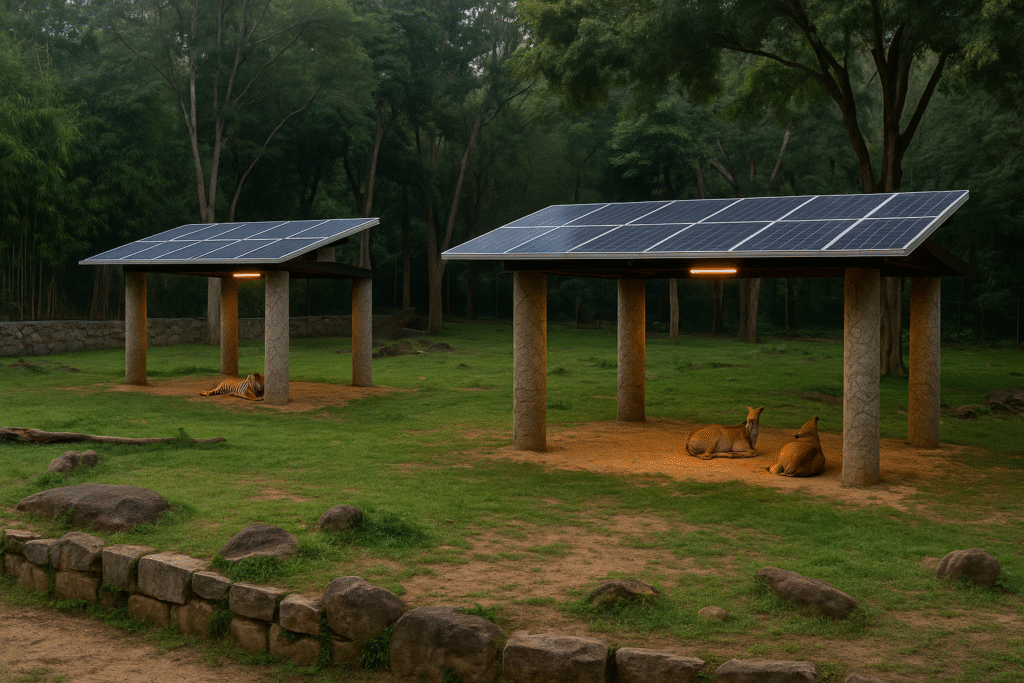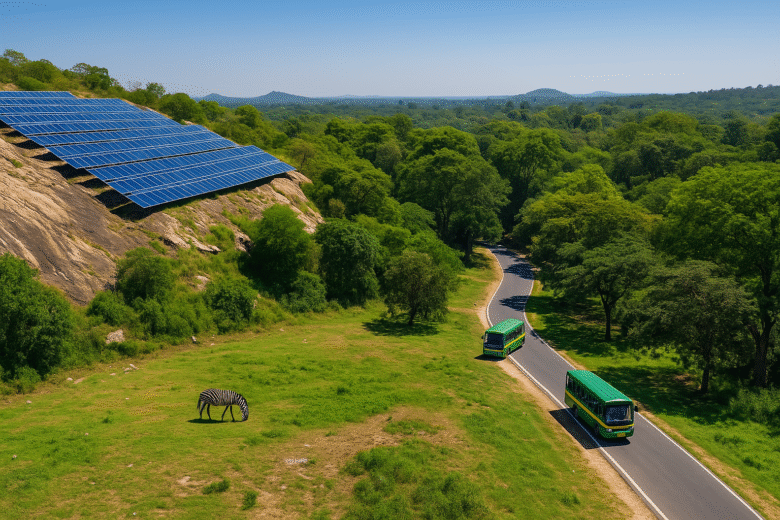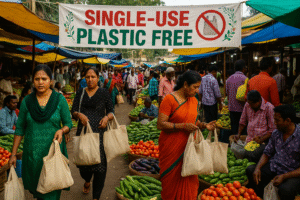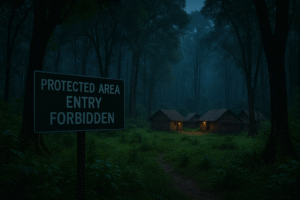Fun fact: the roar of a tiger and the hum of a solar inverter will soon share the same soundtrack.
Welcome to “India’s First Fully Solar-Powered Zoo”, where the Bannerghatta Biological Park (BBP) in Bengaluru is preparing to run entirely on solar power. It’s not just a zoo upgrade — it’s a statement that wildlife infrastructure can be both cutting-edge and climate-friendly.
A Bold Transformation
When you think of a zoo, energy consumption and wildlife care might come to mind — but renewable energy? Rarely. BBP is changing that by installing a captive 1-megawatt (MW) solar power plant designed to meet all its power needs — from lighting, water-pumping, and vehicle charging to clinical services.
According to official figures, the zoo currently consumes roughly 500–600 kilowatts (kW) per month; the 1 MW system will generate a surplus that could be fed back into the grid through net-metering. It’s a shift from “we’ll cut bills” to “we’ll lead by example.” By becoming self-sufficient in energy, BBP signals that conservation sites can also be clean-energy pioneers.
Why It Matters (and Why We Should Care)
On first glance, a zoo running on solar might seem a nice green side-note. But dig deeper, and several important angles emerge:
Operational resilience: Wildlife facilities cannot afford blackouts. Critical services — animal care, medical units, life-support systems — need uninterrupted power. Solar with storage offers reliability.
Climate lens: Zoos are part of the natural-built infrastructure. When they switch to renewables, they reduce their carbon footprint and become models of climate-smart design.
Educational value: Visitors come for lions and tigers but leave with ideas. If BBP can run fully on solar, schools and families might ask: why can’t our school or colony do the same?
Setting precedent: If a zoo can do this, so can colleges, hospitals, and municipal parks. It widens the public imagination for sustainable infrastructure.
Behind the Scenes: How It’s Being Done
The full-solar zoo project is backed by the ICICI Foundation (the CSR arm of ICICI Bank, which supports social and environmental projects) in collaboration with the Zoo Authority of Karnataka (ZAK). The cost of installation is estimated at around ₹ 3.5 crore, plus another crore for electrical work and grid-tie infrastructure.
The solar plant is being constructed on a rocky outcrop inside the park — smart use of already available space rather than clearing fresh forest land. Cables will connect the system to sub-stations, and full operations are targeted for launch in early 2026.
Anecdote: A Tourist’s Reflection
I visited the park just weeks before the installation announcement. Children watched deer prance, families queued for safari rides — and an electrician was mounting panels on the edge of a hill inside the park.
A parent asked her son, “Do you think the tigers care whether we have power from coal or the sun?” The child pointed at the panels and said, “If the sun keeps them warm, I’ll like that better.”
It struck me: the narrative of this zoo isn’t just about animals — it’s about the kind of world they, and we, will inherit.

Challenges and Questions
Even with the excitement, some challenges remain:
Maintenance & longevity: Solar panels are reliable, but they need cleaning, monitoring, and periodic replacement. Can the administration sustain that commitment?
Storage & backup: A 1 MW plant covers daytime needs, but does it include battery storage? If not, operations after dusk may still rely on conventional supply.
Grid-tie complexities: Feeding surplus power back to the grid is great — but technical and payment delays often discourage institutions from maintaining surplus energy.
Replicability: Bannerghatta has space, sunlight, and funding. Smaller zoos or wildlife centers with limited resources might struggle to copy the model.
Still, tackling these questions is part of the progress.
Why This Leap Is Provocative
We rarely expect conservation sites — and their back-end systems — to pioneer sustainability. Usually, the emphasis is on animal care, visitor comfort, or breeding programs. BBP flips the script: the infrastructure itself becomes part of conservation. Power becomes part of the habitat.
In India, conservation and sustainability are often treated as separate conversations. Here they converge — and that’s worth a little discomfort. If a zoo can shift entirely to solar power, what excuse does a municipal office have? Or a hospital still running on diesel generators?
This isn’t just a success story; it’s a provocation — a challenge to rethink what “green leadership” actually looks like.
Conclusion
India’s first fully solar-powered zoo, India’s First Fully Solar-Powered Zoo represents more than a renewable energy project. It marks a shift in mindset — showing that conservation infrastructure can also be climate-smart.
This initiative proves that protecting animals and protecting the planet are inseparable goals. The next time you visit Bannerghatta, look beyond the majestic lions and elephants. Notice the rows of solar panels on the hill. They might not roar, but they speak loudly of change — of an India ready to power its wild side sustainably.
Because if a zoo can do it, so can we.
Author’s Note
I’ve walked the trails of many wildlife parks and always felt uneasy seeing diesel gensets buzzing near enclosures. Seeing a park flip that script — turning energy itself into conservation — feels revolutionary. Our wildlife deserves more than safe cages; it deserves a safe climate.
G.C., Ecosociosphere contributor.




